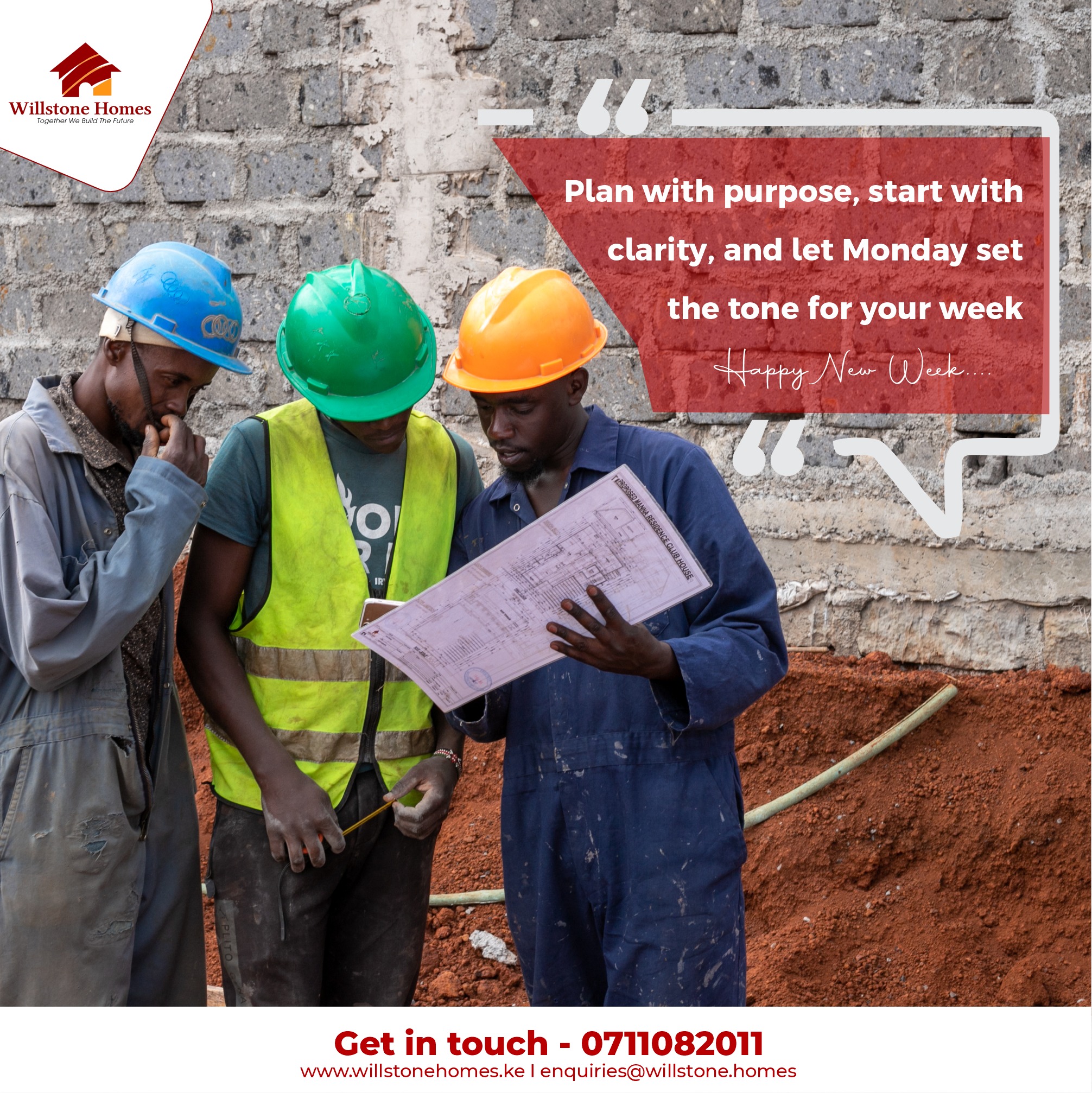Building a house has become one of the most closely watched financial decisions, especially as the Real cost of building a home in Nairobi keeps rising alongside shifting Kenya real estate market trends. Across the capital, aspiring homeowners and private property developers in Kenya are grappling with unpredictable material prices, labour shortages, stricter compliance fees, and the ripple effects of inflation. In a city where land remains scarce and demand continues to surge, understanding the true cost of turning a plot into a complete home is no longer optional — it is the first step to making a realistic, financially sound construction plan in 2025.
Current market headline numbers (what most builders see)
Recent construction-cost guides for Kenya put typical residential building rates in a wide band depending on finish level and location:
- Conservative industry guides place residential construction costs in Kenya from roughly KSh 54,700 to KSh 97,700 per m² in 2025 — a range that captures “standard” suburban builds through to high-end finishes.
- Practical home-building guides show similar bands: basic finishes from around KSh 48,000–65,000/m², standard finishes KSh 65,000–95,000/m², and luxury from KSh 95,000+/m². These ranges mean a 100 m² standard home will typically cost KSh 6–7.5 million (excluding land).
Those headline bands are shaped by five core drivers: materials (cement, steel, aggregates), labour, professional fees & permits, finishes (tiles, kitchens, sanitary ware), and contingency/finance costs. Below I break these down.
The four cost drivers you must watch now
1. Materials — price volatility is real
Cement and steel dominate material cost swings. In Nairobi, the 50 kg bag of cement commonly trades in the KSh 720–850 range depending on brand and bulk purchasing — a meaningful component when a home needs hundreds of bags.
Reinforcing steel (rebar) has also been volatile; market guides show rebar and structural steel priced in ranges that translate to tens of thousands of shillings per tonne and are a large line item in reinforced concrete frames. Expect rebar and structural steel to represent a significant share of foundation and frame cost.
2. Labour — skilled trades are costlier than a decade ago
Labour rates for masons and skilled trades have risen; industry salary surveys show average mason earnings around KSh 134/hour (2025), with higher rates for skilled foremen and specialist trades. Labour typically represents 20–30% of total build cost depending on the build method.
3. Input inflation & supply chain (index momentum)
Kenya’s Construction Input Price Index shows continuing pressure on material and input costs through 2025 — the index rose modestly between Q1 and Q2 2025 — which means contractors are passing costs into quotes or increasing contingency margins.
4. Permits, professional fees & soft costs
Nairobi County and national approvals (architect, structural engineer, NCA, NEMA clearances, county plan approvals) add fees. Some approvals are levied as a percentage of construction cost (for example, inspection/occupation certification and certain plan evaluations are charged on contract value), while other permits (excavation, dumping) attract fixed sums. These soft costs typically add 4–7% to the total project budget.
Cost breakdown — three realistic build scenarios (per 100 m² home)
The table below shows simplified, conservative estimates for a 100 m² house (finished floor area) in Nairobi today. Figures are illustrative and combine industry per-m² bands with typical component shares.
| Scenario | Cost per m² (KES) | Total cost — 100 m² (KES) | Materials (50%) | Labour (25%) | Finishes (15%) | Professional & permits (5%) | Contingency (5%) |
|---|---|---|---|---|---|---|---|
| Basic | 55,000 | 5,500,000 | 2,750,000 | 1,375,000 | 825,000 | 275,000 | 275,000 |
| Standard | 75,000 | 7,500,000 | 3,750,000 | 1,875,000 | 1,125,000 | 375,000 | 375,000 |
| Luxury | 100,000 | 10,000,000 | 5,000,000 | 2,500,000 | 1,500,000 | 500,000 | 500,000 |
Notes: Materials include cement, steel, blocks/bricks, aggregates, timber and plumbing/electrical supplies. Finishes include tiling, joinery, sanitary ware, kitchen fittings and external landscaping. Professional fees and permit charges assume standard architect/engineer fees and county/NCA inspections; these may rise with project complexity. (Data bands referenced above.)
Practical examples and what inflates a budget fastest
- Reinforced concrete frames & deep foundations: adding a full reinforced frame can move a basic 55k/m² build into the 70–90k/m² band because of steel and skilled labour.
- Imported finishes: tiles, sanitary ware and kitchen cabinetry imported from Europe/Asia can easily add 20–40% to the finishes line.
- Site issues: poor soil, rock excavation, or difficult access can add significant earthworks costs.
- Delays & finance: high interest rates and long project timelines increase carrying costs and required contingency.
How private property developers in Kenya and buyers are responding
Developers are shifting strategy: to protect margins many are moving to prefabrication, bulk procurement, and value engineering — measures that reduce onsite labour and improve predictability. At the buyer level, many are opting for standard finish houses in satellite towns where Kenya land price trends and satellite towns property market dynamics lower overall project cost despite rising construction inputs. These moves reflect broader Kenyan housing demand 2025 patterns and Nairobi real estate performance realities.
Bottom line — budget with buffers, and shop smart
- Expect a 100 m² standard home in Nairobi today to cost roughly KSh 7–8 million to build (excluding land).
- Always allow 5–10% contingency beyond quoted build cost for material volatility and change orders.
- Negotiate bulk purchase of cement, steel and fittings with your contractor; consider prefabricated elements to lower labour exposure.
- Factor in permit and professional fees (architect, structural engineer, NCA, county approvals) as non-negotiable line items.
Quick checklist before you sign a build contract
- Ask for a detailed BOQ (bill of quantities) and ask the contractor to price all line items.
- Verify material brands and sample finishes before committing.
- Confirm labour rates and expected workforce; get a clear project timeline with penalties for delays.
- Budget for county approvals and NCA requirements up front.
- Build a 5–10% contingency into your funding plan.
The Real cost of building a home in Nairobi is predictable only if you plan for volatility
The Real cost of building a home in Nairobi in 2025 sits at the intersection of volatile material prices, rising labour rates, and county/national approval costs. For buyers and private property developers in Kenya, the path to control is simple in theory: plan rigorously, buy materials smartly, and design for cost-effective methods such as prefabrication and standard finishes. In practice, that discipline separates projects that finish on budget from those that overrun by millions.




